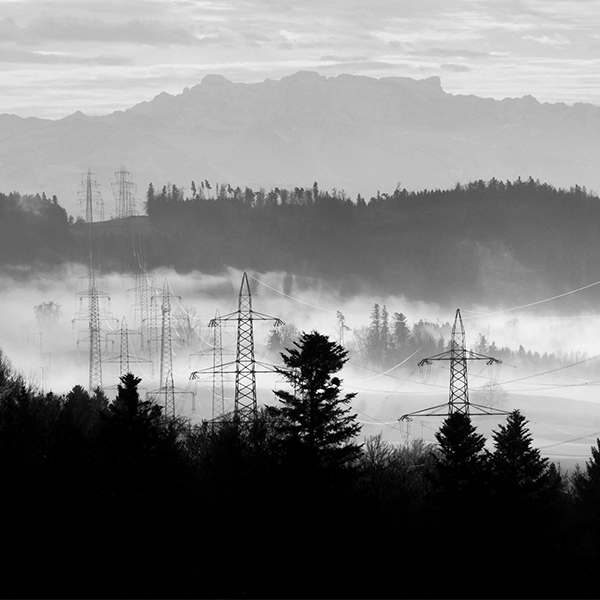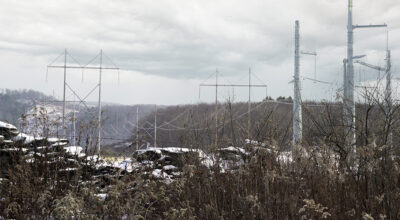The Power Line Monitoring Challenge
One of the keys to maintaining uninterrupted electrical service is effective power line monitoring. The goal of power line monitoring is to detect faults and failures on power lines – ideally lowering the time and effort spent locating and rectifying these faults and raising grid resilience.
The problem is that traditional power line monitoring technology still falls far short. Legacy electrical monitoring solutions are inaccurate – unable to pinpoint outages when they occur, in order to effectively direct work crews. They oftentimes can only detect major issues such as short circuits. Other solutions exist which involve visual inspection, either by drones, helicopters or field people in trucks. These are accurate but cover relatively short distances, so it takes a long time to check a grid and is affected by weather and other environmental conditions.
Existing solutions also suffer from the likelihood of recording false positives. This is when transmission system operators (TSOs) are alerted to a potential fault along the power line, only for it to turn out to be incorrect. This nuisance not only reduces the uptime of the power lines, but also means that operational costs are significantly increased as crews must be sent out to investigate. It has the result of simultaneously increasing costs as teams must be dispatched to investigate, and reducing profits as the power line is not running at 100% capacity.
Another major issue facing traditional solutions is that they look solely at the electricity output itself using fault recorders. This is not ideal for TSOs as they can not pinpoint the exact location where a fault lies. They can only provide a given range between the 2 points of reference. This means that businesses spend time and lose money searching for faults as they don’t have the precise location.
Lastly, many power line monitoring solutions currently used are not capable of scaling effectively. This is due to the fact that they’re based primarily on line-of-sight. This is a massively outdated technology which requires the need for drones, helicopters, and people that need to go out in trucks to scan the power lines with special cameras or other testing equipment. This is long, expensive, and means that a specific segment will be visited a few times a year, if at all. There are other types of sensors which need to be attached directly to a working power line or power line tower. The key challenge here lies in the fact that these sensors must be manually placed on power lines, which of course is a dangerous, and highly manual process.
Grid resilience to downtime is getting lower. To prove this point, from 2015 to 2020, the number of annual blackouts in the United States doubled. The cause behind 92% of these service interruptions? The nation’s aging transmission and distribution system. According to the American Society of Civil Engineers, the cost of these blackouts is growing massively, too. Power outages cost each US household up to $169 annually, and every minute without power costs US data centers almost $9000.
What is Fiber Optic Sensing Technology?
Fiber optic sensing enables TSOs to monitor overhead power lines accurately for hundreds and thousands of kilometers in real-time – without adding sensors on lines or towers. It achieves this by providing continuous, real-time measurements along the entire length of a fiber optic cable—unlike conventional monitoring devices, where a physical device is placed at the end of a copper line.
Fiber Optic Sensing leverages existing optical ground wire (OPGW) cables installed on the majority of US electrical transmission grids built since the 1980s. These cables run between the tops of electricity pylons (or along underground cables) and were installed to provide high-speed data transmission. This is then used by the grid operator for control purposes to ensure everything is running smoothly. Extra bandwidth is sold for broadband internet services and service providers, feeding high-speed internet even to rural areas.
How Does Fiber Optic Sensing Work?
Fiber optic sensing works by enabling continuous, real-time measurements along the entire length of the OPGW cable. This means that TSOs can accurately monitor overhead and underground power lines for hundreds, and even thousands of kilometers.
Distributed fiber optic sensing enables you to detect acoustic energy and vibrations generated by activity around a transmission power tower and lines. These activities can be caused by events like electrical arcing caused by insulation breakdown and flashovers, or cable strikes caused by vegetation, galloping of cables in extreme winds, sabotage or vandalism, or even wildfires in proximity to the tower.
PrismaPower – Simplifying Fiber Optic Sensing
Using PrismaPower, our unique fiber optic sensing technology, implementation is as simple as plugging in a USB cable – no helicopter, no cranes, no satellite link-ups or remote crew deployments. In just hours, PrismaPower turns OPGW wires into a set of highly-sensitive distributed sensors extending for hundreds and thousands of kilometers. PrismaPower’s machine learning algorithms take the detailed data collected through the grid, pinpointing and alerting of events at the tower level in real-time.
Deployed in hours, and highly scalable, PrismaPower offers a new level of visibility into power line status and grid resilience. The system remotely identifies safety events like physical damage, extreme weather, electrical faults, vandalism, and more in real time. Then, by pinpointing faults to the individual tower level, PrismaPower helps operators minimize downtime. Even more importantly, by predicting or catching physical events early – before they escalate to outages – PrismaPower can actually ensure grid uptime. Moreover, this is all done in real-time and with minimal false positives.
Real-world Example: Repeated Short Circuit Detection
A regional electrical provider that rolled out PrismaPower suffered from a short circuit which kept coming up and down. In just minutes, the source of the fault was detected by PrismaPower, the tower location pinpointed, data cross referenced with fault recorders, and a line crew was dispatched. The crew identified and fixed a faulty surge protector that was causing repeated short circuits.
The Bottom Line
Economic stability and personal safety demand energy delivery security and grid resilience. Even though it is considered critical infrastructure, the US electrical transmission grid remains vulnerable to outages owing to poor monitoring capabilities. To ensure energy delivery in the face of growing demand, cost-effective solutions must be found to identify and rectify faults quickly. Requiring zero investment in physical power line based equipment and only hours of setup time, PrismaPower brings the promise of distributed fiber optic sensing over OPGW to reality.
Learn more about how PrismaPower is changing the face of power line monitoring






